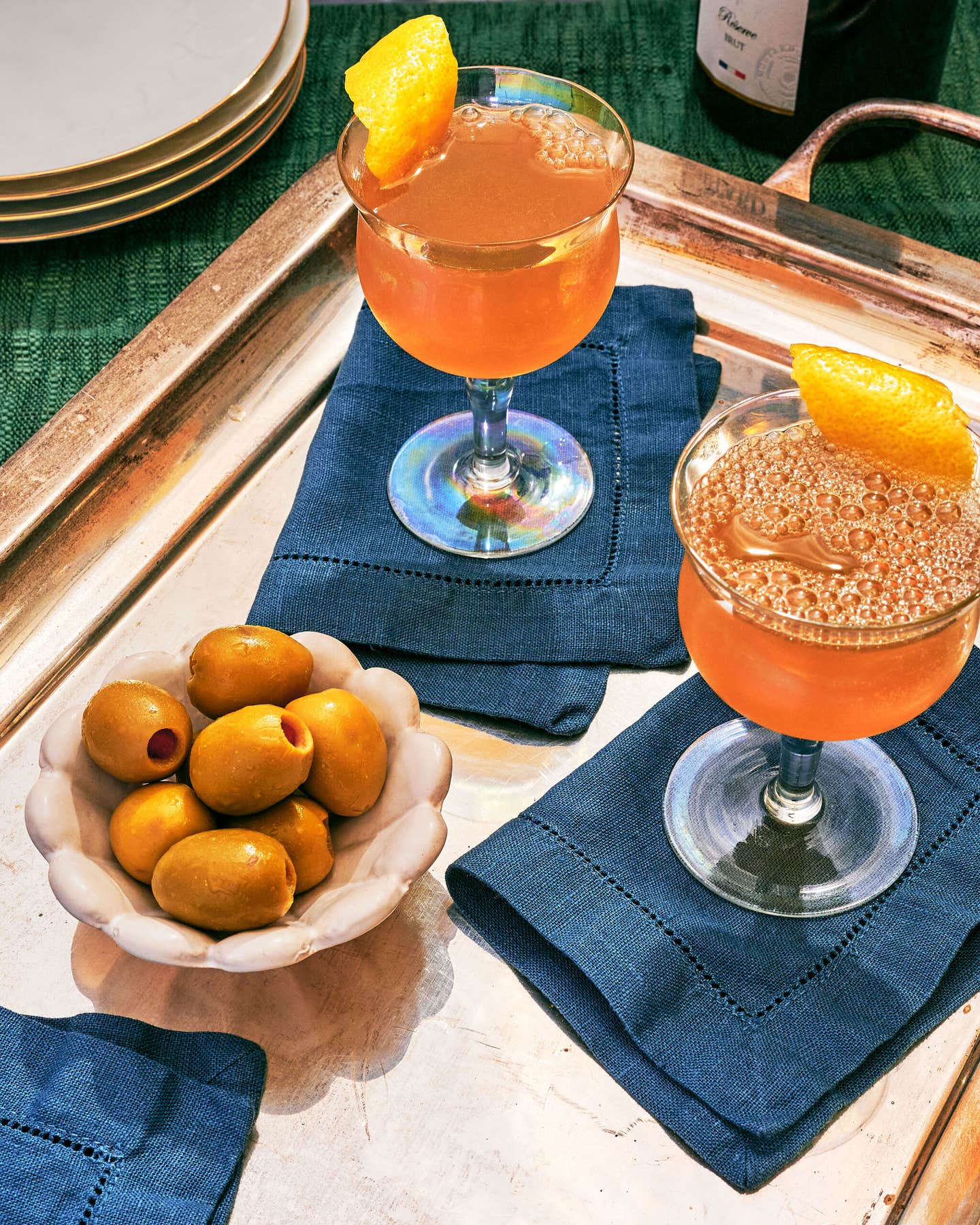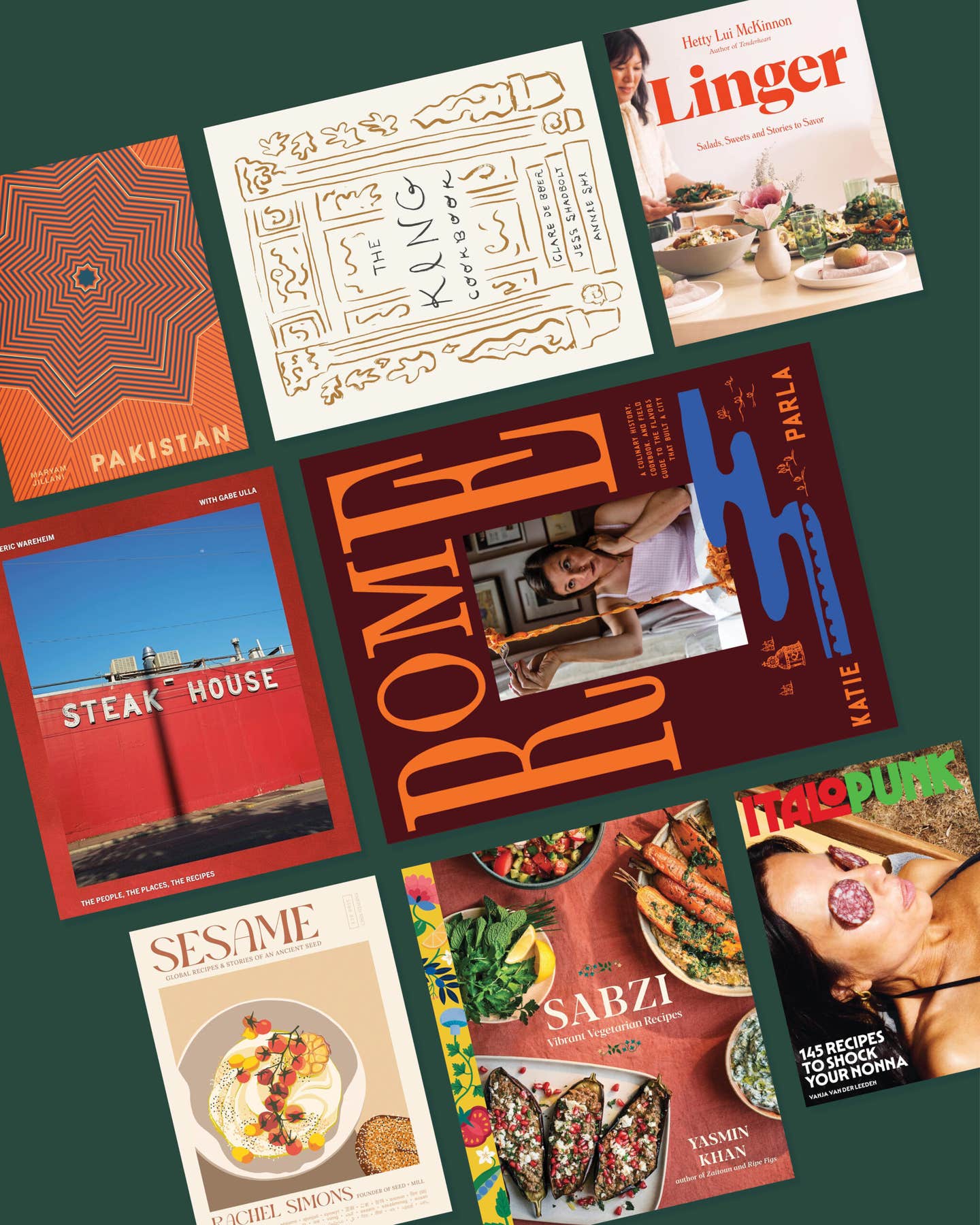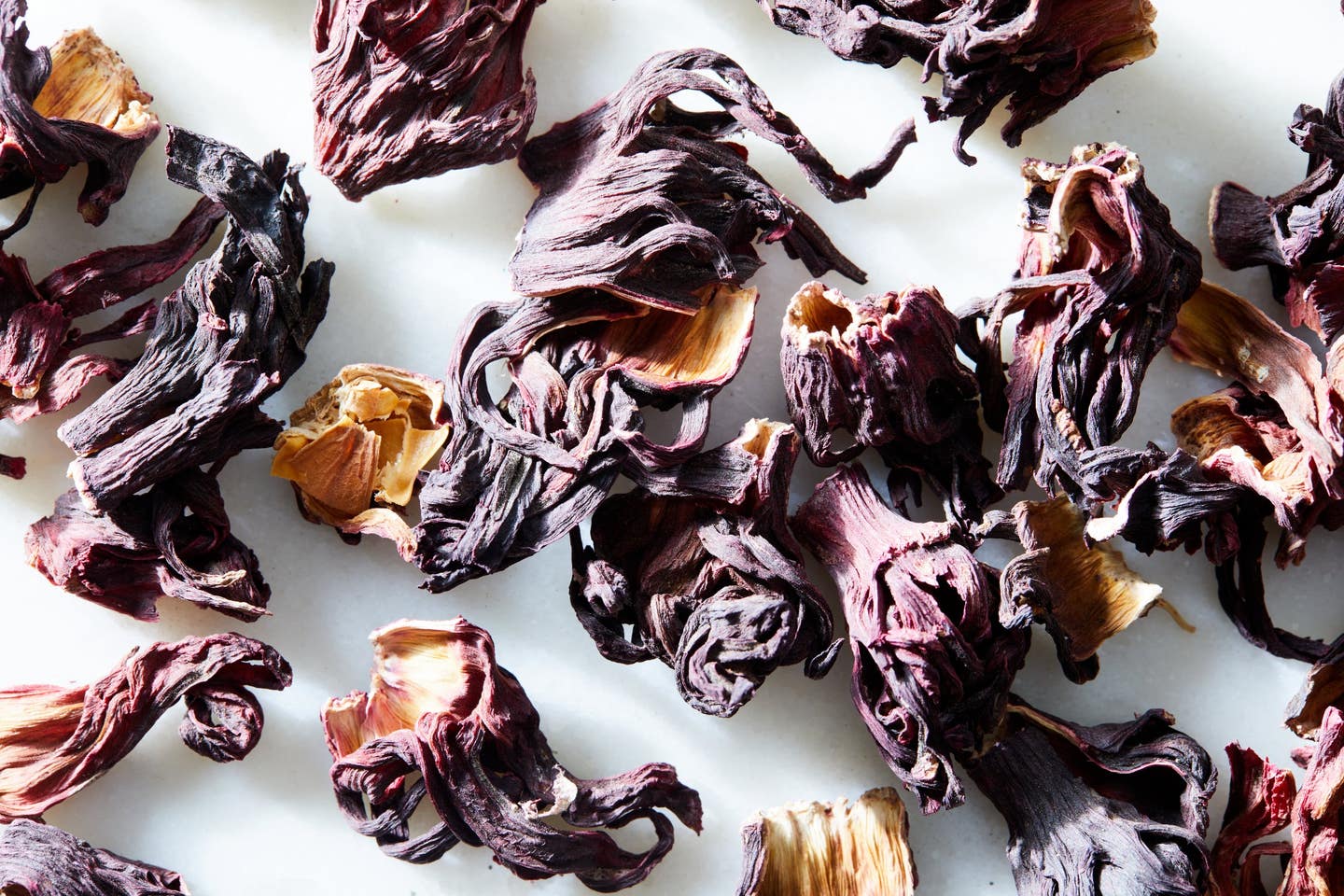
From Jamaica to Senegal, This Crimson Infusion Reigns Supreme
Shannon Mustipher on the history and health benefits of hibiscus.
Orhul. Bissap. Sobolo. Sorrel. Flor de Jamaica. Roselle. Depending on where in the world you find yourself, you may encounter a variety of beverages going by disparate names but sharing two distinct traits: a striking, saturated red hue, and an equally vibrant tart and bracing taste. What these drinks all have in common is hibiscus, a flowering plant which grows in temperate to tropical zones around the globe, most notably in Mauritius, India, Indonesia, Polynesia, and Hawaii. The origins of hibiscus are unclear, though European scientific records dating back to the mid-18th century indicate that it was by then already present in Asia and the South Pacific.
The hibiscus genus, of which there are some 400 varieties, is a hardy bush that produces not only its trademark flowers, but also pod-like fruits called calyxes. While the majority of hibiscus plants are known for their ornamental blooms, one strain, Hibiscus sabdariffa, is wholly edible, from roots to leaves to flowers. The calyxes are the part most widely used for making beverages; these may be consumed fresh, but it’s far more common to find them dried, typically in Caribbean, Latin, West African, and Asian markets. Hibiscus drinks are a homestyle staple in many of these cultures, though until recently the ingredient didn’t have much of a cocktail presence. As the popularity of tropical and Latin bars and restaurants grows, however, I’ve noticed hibiscus popping up more and more on drink menus. In fact, the first time I ever tasted it was in a bar.
My first encounter with hibiscus came when I was working as beverage Director at Gladys Caribbean, a now-shuttered Brooklyn restaurant which had a tightly edited food menu influenced by Jamaican jerk. The drink selection took its cues from the island too, in an effort to recreate the experience of eating at an open-air Caribbean road- or beachside stand.
In Jamaica, sorrel is as ubiquitous as sweet tea is in my native South Carolina, though the American South has its own rich "red drink" tradition as well. Red berry-flavored beverages are a fixture at Juneteenth celebrations—particularly those in Texas and along the Louisiana Gulf Coast. Since the 18th Century, South Carolina’s Geechee Gullah community has grown hibiscus plants brought over from Africa to make infusions similar to the Nigerian bissap and Senegalese sobolo I mentioned earlier.
I started to look deeper into hibiscus drinks and was pleasantly surprised by what I learned: Hardly exclusive to the Caribbean, the ingredient is also popular in Mexico, West Africa, and Southeast Asia. Both hot and cold hibiscus drinks can be made by steeping the calyxes, leaves, flowers, or all three. Some are simple water infusions, sweetened with sugar, while others are enhanced with spices, citrus, and even mint. With that said, I would like to introduce you to three must-try styles of hibiscus drinks, spanning traditions from West Africa, to the Caribbean, to Latin America.
Back to the Roots: Bissap
In Nigeria and Senegal, hibiscus leaves and flowers are used to create a tea called bissap, which is traditionally enjoyed chilled, flavored with sugar, lemon juice, ginger, and mint. In Ghana, this drink is more commonly known as sobolo, and sometimes incorporates pineapple juices and local peppers. The result—a bright and zesty beverage packed with vitamin C, antioxidants, and antimicrobials—is considered by many to be the ultimate wellness drink, flushing toxins from the system while boosting overall immunity. My favorite bissap/sobolo to sip on is the bottled version from Bosuo, produced in New York City by Ghanian expat Afuya Ayisi. Scented with both mint and vanilla, it’s the perfect companion to a summer picnic or beach jaunt. While I adore it on its own, Bosuo is also delicious in cocktails and mocktails, and it’s particularly lovely topped with grapefruit soda or sparkling wine, or mixed with agave spirits. If you’re a newcomer to hibiscus, I suggest starting here: incorporate bissap into a cocktail by using it as the juice/tea element in a gin punch, or in lieu of cranberry juice in a cosmo riff. The infusion has a similar tartness, but with a slightly earthier complexity than classic cran.
Spice it Up: Caribbean Sorrel
When West Africans were trafficked to Caribbean and American sugar plantations via the triangular slave trade, they carried with them ingredients from their home continent. It’s in the Caribbean that African bissap meets spices imported from Southeast Asia and the Amazonian Rainforest, including clove, cassia cinnamon, nutmeg, and ginger. These global flavors were eventually added to the simple red drink, imparting additional layers of complexity and aroma. Sorrel—now a ubiquitous beverage in Jamaica, Barbados, and throughout the Caribbean, is far punchier than its West African predecessor, delightful on its own or used as a vehicle for local rum. In my book, TIKI: Modern Tropical Cocktails, I use sorrel as the base for a festive punch, mixed with black tea, pineapple juice, and two types of bitters.
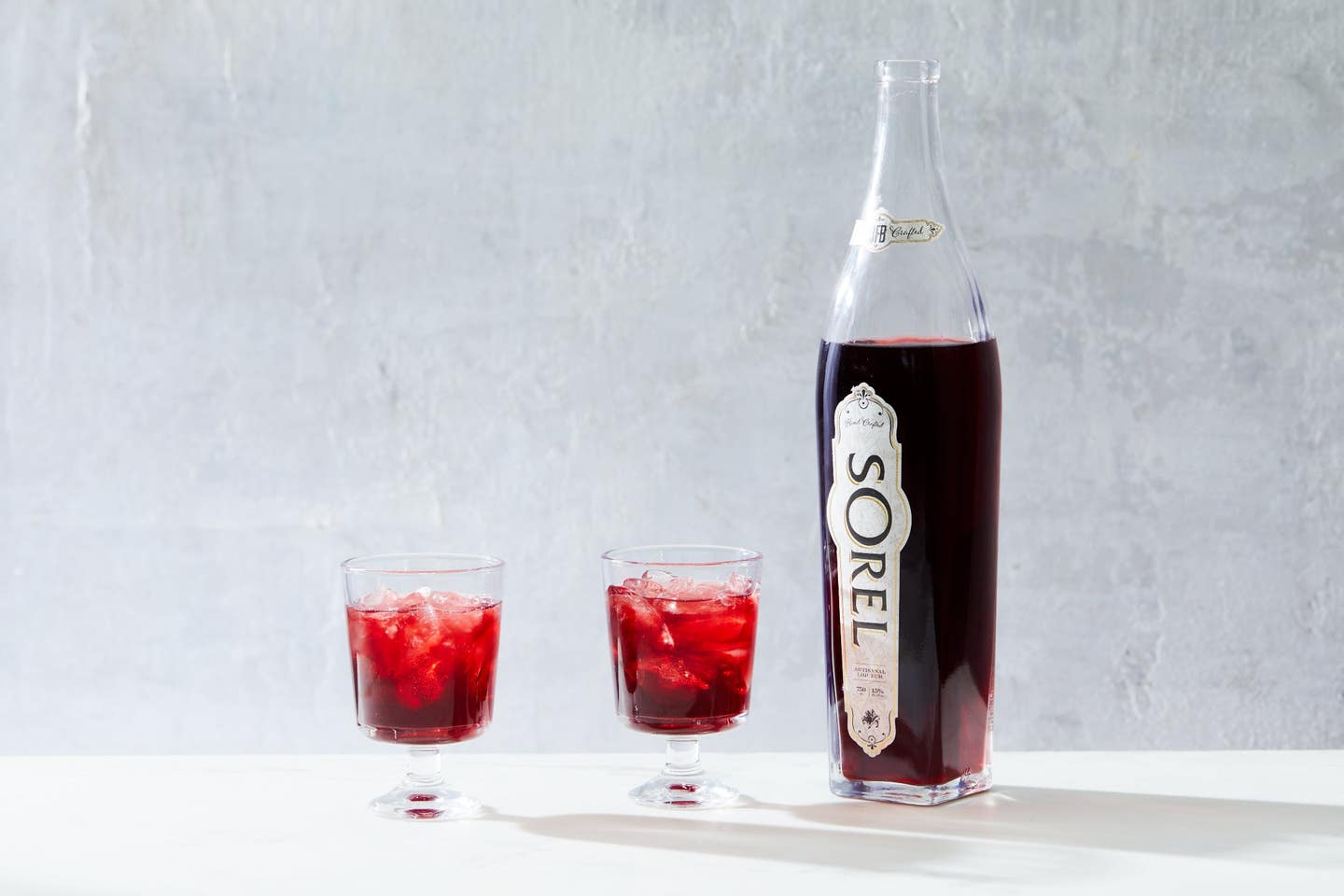
Speaking of cocktails, if you would like to make your own mixed drinks with sorrel, I highly recommend Sorel Liqueur. Created by Jackie Summers, a Brooklyn native with Barbadian roots, Sorel clocks in at 15% ABV. It makes for a bright and punchy addition to cocktails or can even be sipped straight, like a juicy, spicy Shiraz.
Take it Easy: Agua de Jamaica
Inevitably hibiscus made it over to the North American continent, which had its own sugar trade, albeit on a much smaller scale than the one that dominated the Caribbean economy for the better part of 300 years. In Mexico, a hibiscus drink called agua de jamaica flourished, and to this day it goes head-to-head with horchata as the country’s go-to thirst quencher. Even simpler than bissap, agua de jamaica fits neatly into Mexico’s tradition of fruit-forward aguas frescas. While not ordinarily mixed with spirits in Mexico, I have found this refreshing infusion to be a delicious component in margarita or paloma riffs. I like to make a concentrated version by doubling up on the sugar, then using it like simple syrup, or even as a colorful float.
Recipes
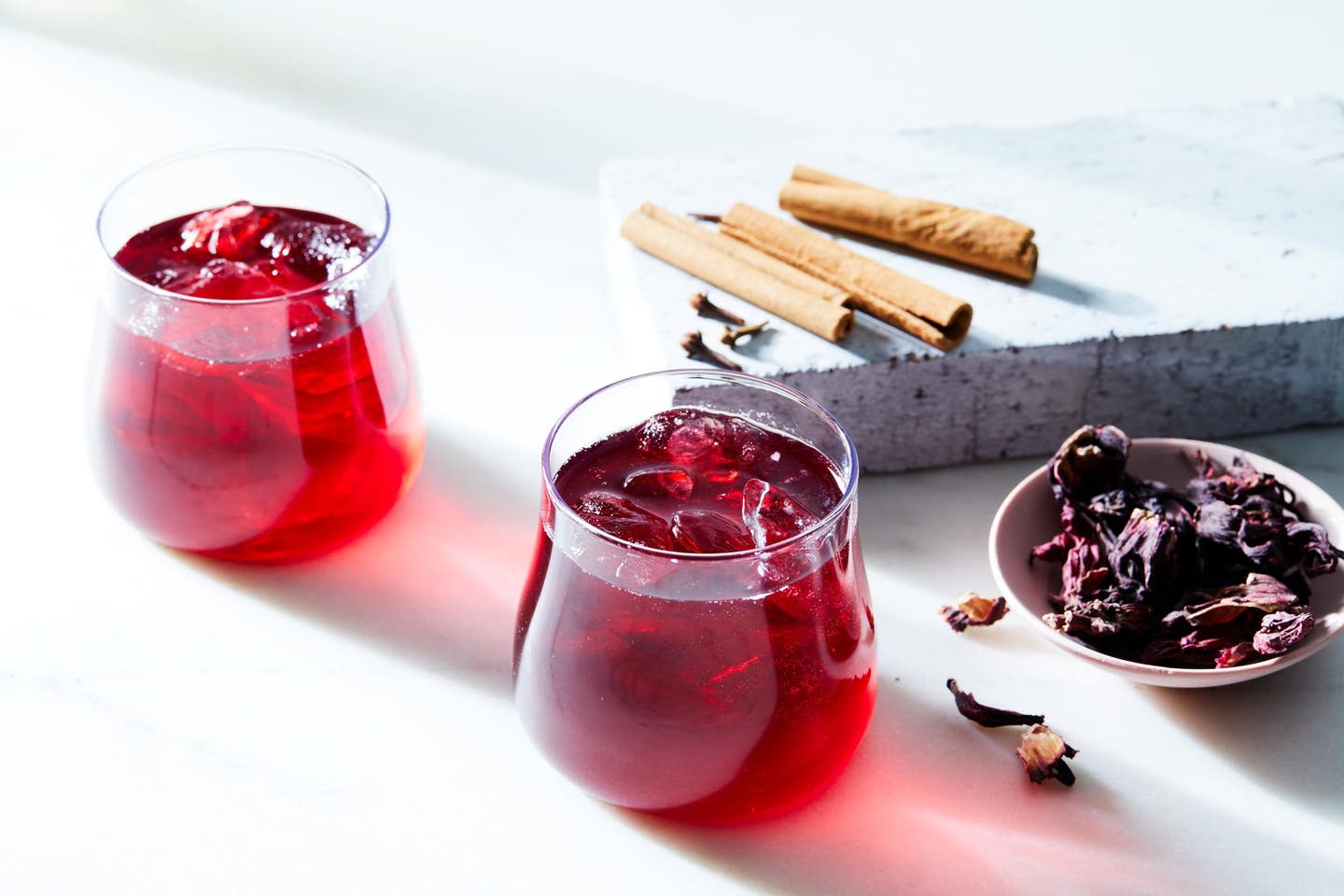
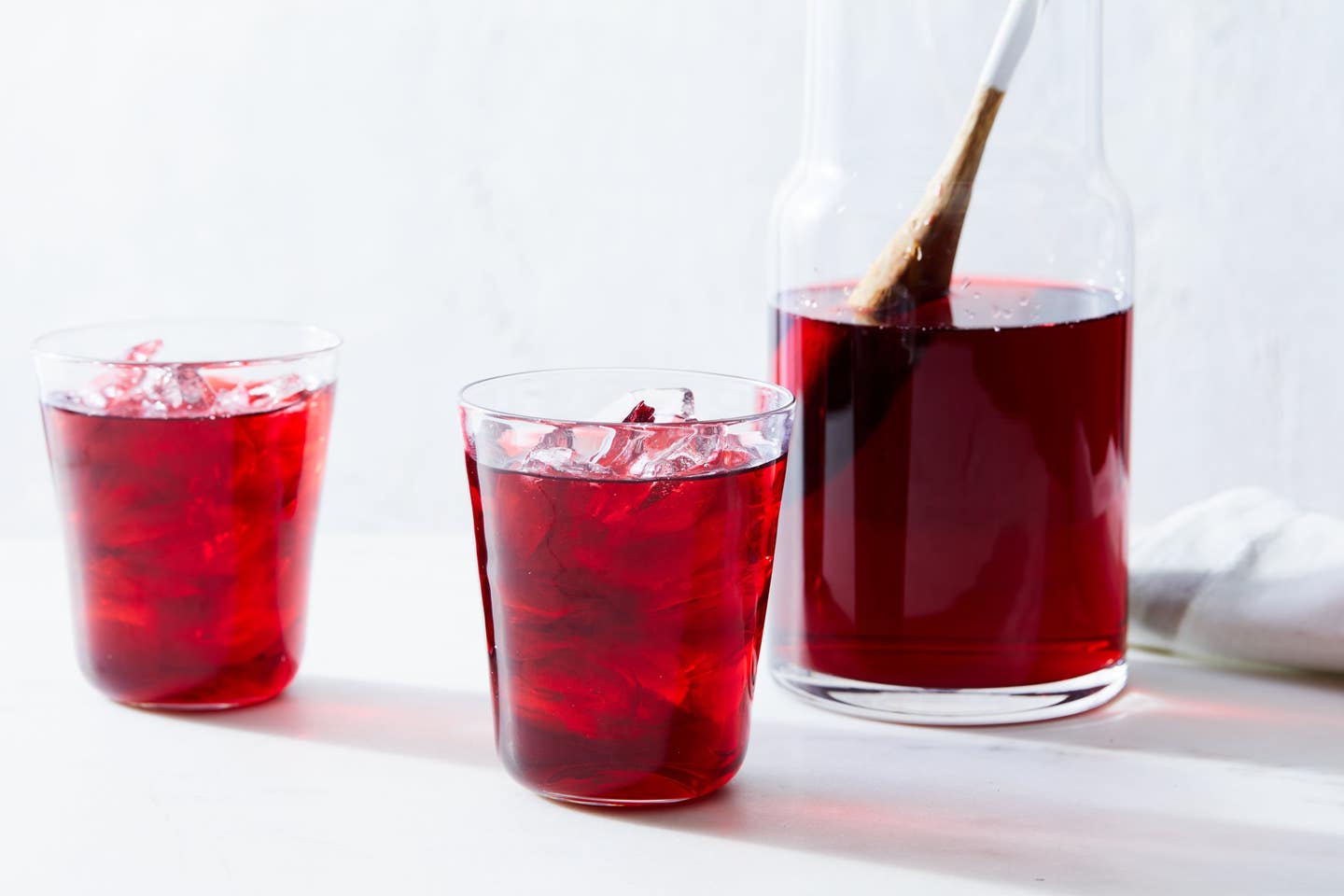
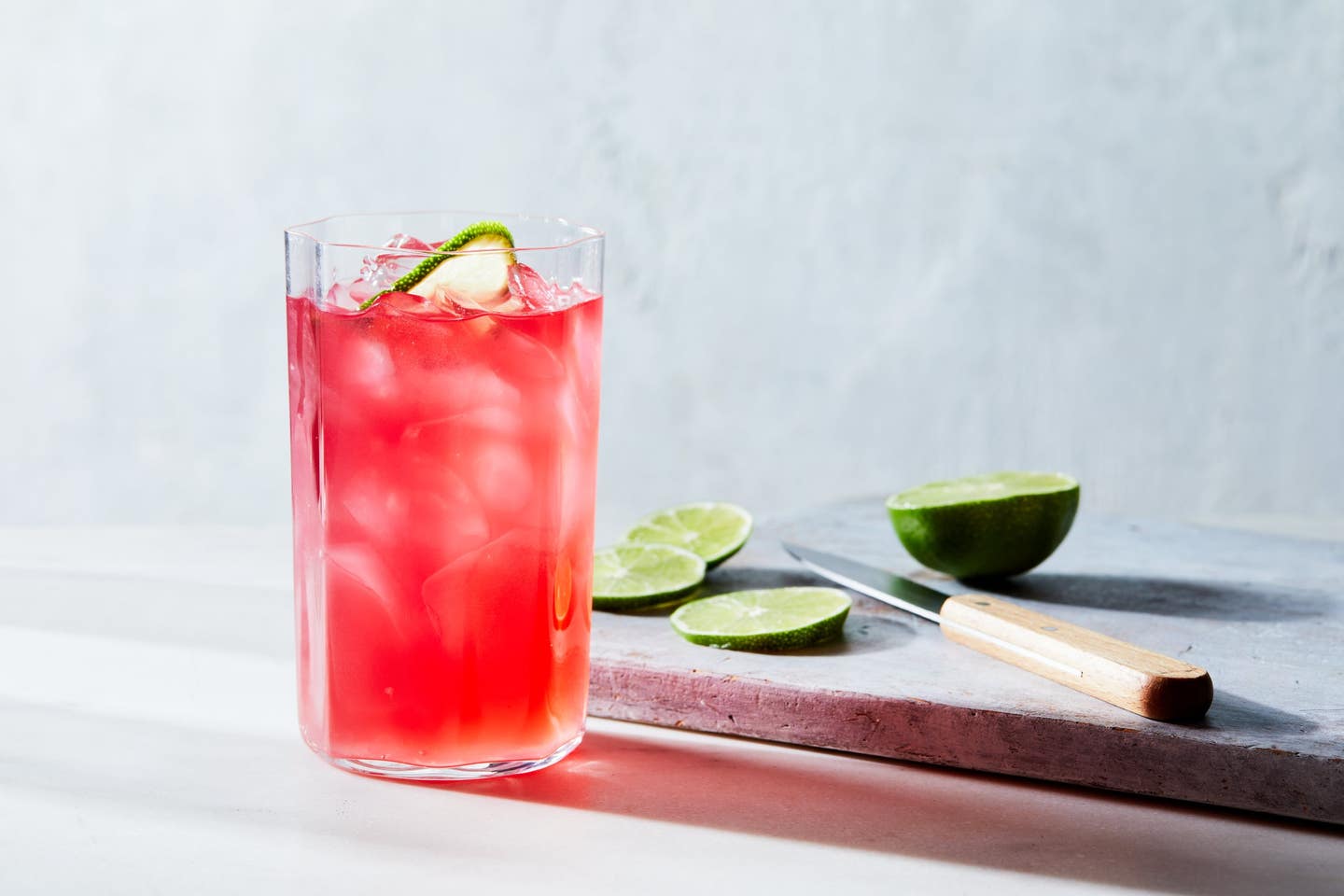
Keep Reading
Continue to Next Story







